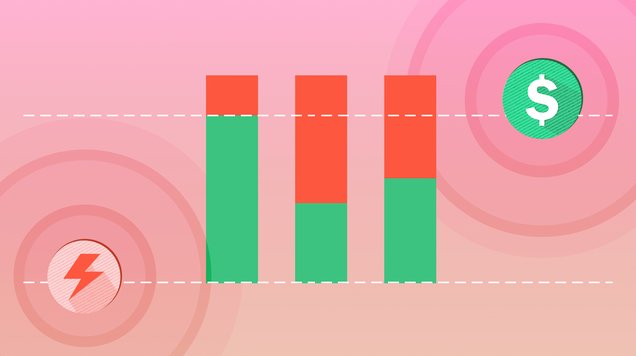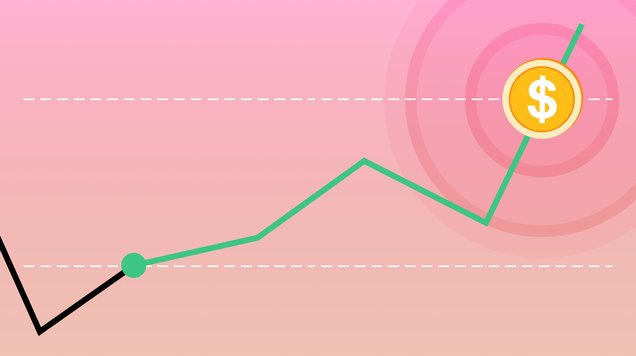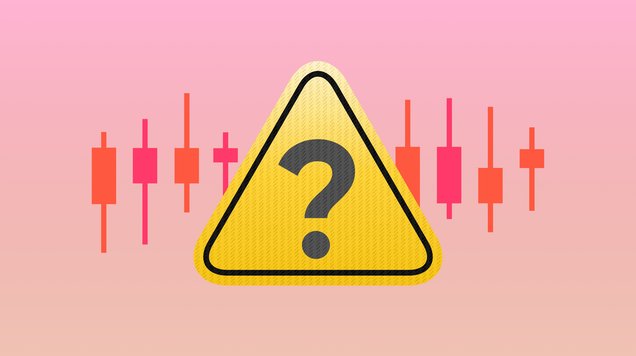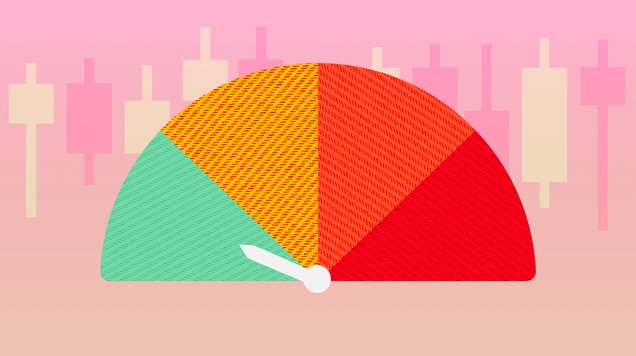Position sizing
Learn how to protect your capital and avoid risk by using position sizing correctly in your trades.

Position sizing is a risk management strategy that traders use to decide how much capital to invest in one position
There are various approaches to position sizing, from simple percentages to advanced models
Traders should choose a position sizing strategy based on their risk tolerance and avoid the influence of emotions on their trades
Position sizing helps traders to reduce risk as it limits exposure, but also allows them to build consistency and optimise returns
Introduction to position sizing
Position sizing refers to the process of determining how much capital to allocate in a specific trade. This is an important aspect of risk management that every trader should learn to increase their chances for success while trading global online markets.
The goal of position sizing is to find a balance between risk and reward while helping traders to build a diversified portfolio by allocating capital to different assets and asset classes.
For example, a forex trader may have $3,000 in their margin trading account. After careful analysis, they identify a trading opportunity to buy EURUSD that presents a 1:2 risk reward ratio. This means that the expected potential profit from the trade would be two times higher than the amount at risk. Position sizing involves the process of determining how much the trader would risk out of the $3,000 in their account.
Investing all that $3,000 on one trade opportunity could be huge risk, as if the market price goes against them, they could lose everything. If the same trader decided to risk say 1% of their capital, they would be risking $30 in one trade, and if they lost, they would still have $2,970. This would allow the trader to take additional trades, and if they make successful trades, they can recover the loss from the initial losing trade. Keeping your trading account well funded is important because it stops trades from being closed out automatically if there is not enough margin to sustain them through volatile periods.
What are the factors to consider when doing position sizing?
1. Risk tolerance
It’s crucial for a trader to identify their risk tolerance level before starting to trade. Risk tolerance in trading refers to an individual's ability and willingness to withstand potential losses in their investment portfolio or trading positions. Essentially, it seeks to answer the question; how much loss can I take in a trade or period without having an impact on the way I think about the next trade?
Traders can be conservative, moderate, or aggressive risk takers. Conservative traders, also known as risk averse traders, prioritise the preservation of capital and are generally not willing to take on significant risk in pursuit of higher returns. They are often comfortable with lower potential returns since their trades are relatively low risk.
Moderate risk takers are willing to take on a medium level of risk in their investment or trading activities. They seek a balance between potential returns and risk exposure.
Aggressive risk takers, also known as risk seekers, are focused on high growth strategies. They are willing to accept a significant level of risk in exchange for the potential of higher returns. They often focus on growth-oriented strategies that have the potential for substantial capital appreciation, but also come with higher volatility.
2. Trading psychology
Trading psychology refers to the psychological and emotional factors that influence a trader's decision-making process in financial markets. To be successful in trading, a trader must be clear-minded and focused on the trading process.
Taking a bigger trade than one is comfortable with can make trader’s mindset highly emotional, unsettled, and prone to mistakes such as overtrading, revenge trading, and chasing after price.
A trader who has not done proper position sizing may find themselves consistently looking at price movements. This can be tiring and emotionally draining, leading the trader to have a stressed trading lifestyle. Stress can trigger emotional bias and lead to unplanned trading decisions, so it’s important to maintain a clear head when investing in online markets.
3. Risk Management
Risk management in trading refers to a set of strategies and techniques used by traders to minimise potential losses and protect their capital while trading in financial markets. As a trader, you must think of yourself as a risk manager. A crucial step of being a good risk manager involves learning how to size your positions.
With position sizing skills, you can create a consistent approach to risk taking where say you decide to risk a specific dollar amount or a specific percentage of your capital in each trade. This will decrease the amount of stress if losses occur, as you will be expecting them and have a plan to balance your overall balance sheet.
Different approaches to position sizing
Fixed dollar amounts
This approach means determining fixed dollar amounts for each trade. For instance, a trader may decide that for each trade in their $3,000 account, they will risk $50. This amount will not change for a specified period until the trader evaluates their risk management strategy.
This approach may face the challenge of continuing to increase risk percentage if the trader is on a losing streak, because $50 of $2,950 is a higher percentage than of $3,000. It may also face volatility risk where some financial assets may be more volatile than others - this means their price will move faster, causing higher losses or gains for investors.
Percentage of trading capital
This approach to position sizing refers to the process of calculating a fixed percentage of trading capital and using that for each trade. For example, a trader with $3,000 in their margin trading account may choose to risk 2% in each trade. So, their first trade would risk $60.
If the trader makes $100 profit from the first trade, the next trade will risk 2% of the new balance of $3,100. This would be $62.
This approach faces potential challenges when the trader tends to hold trades for a longer period. Instead of using the trading account balance to calculate risk percentage, traders may choose to use trading account equity to calculate risk percentage. Equity refers to the trading account balance plus or minus the unrealised profit or loss from open trades.
Fixed lot size
This refers to the process of determining a fixed lot size to use in all trades. This is very common with traders that have small trading balances. For instance, a trader with a $50 margin trading account may not find it logical to use other approaches. Instead, they may decide to trade using the minimum lot size (0.01) and calculate the risk-reward outlay from each potential trading opportunity.
Advanced approaches
There are other methods of position sizing that include complex models. This includes risk-adjusted position sizing, Kelly criterion, optimal F position sizing, volatility-based position sizing, and dollar-cost averaging. We encourage a significant amount of research to be done on these methods, and to test with a trading demo, before putting them into live markets.
Importance of position sizing
A trader’s goal is to protect their capital and work towards growth. Traders who take too much risk and expose their capital to big losses, could potentially lose all their money in unsuccessful trades. Without capital they cannot continue trading, or they would have to invest more money to keep trading which may not be responsible.
Therefore, position sizing is a crucial aspect in trading and investing. By carefully determining how much capital to allocate to each trade, traders can effectively manage risk and work towards their financial goals responsibly.
Position sizing doesn’t only allow traders to manage risk and protect capital, but it also helps traders to diversify, build consistency and optimise returns. By employing effective position sizing, traders can increase their chances of long-term success in the financial markets.
However, it’s good to remember that using position sizing isn’t a guarantee for successful trade and traders should also use other risk management tools and strategies to reduce risk and protect their funds.
You can practice position sizing with a risk-free demo account that allows you to place trades in real markets using virtual funds. With a demo account, you can try different position sizing approaches and test what kind of an approach suits your trading style and risk tolerance.
Practical example of position sizing
Here is an example that can help you with sizing your positions. In this example, the account size is $3,000 and the trader choose a risk percentage of 2% meaning the amount of capital at risk would be $60.
The trader wants to open a long position on EURUSD currency pair with an entry price of 1.07260. The stop loss order would be placed at 1.06860 meaning the intended difference between the entry price and stop loss is 40 pips (400 points).
Let’s look at how to calculate the lot size using this information.
Lot size (LS) x standard lot size x entry price – lot size x standard lot size x exit price = risk amount
LS x 100,000 x $1.07260 – LS x 100,000 x $1.06860 = $60
LS ($107,260 - $106,860) = $60
LS X $400 = $60
LS = $60/$400 = 0.15
This means that, if the trader uses 0.15 lot size to buy EURUSD at 1.07260 and sets stop loss at 1.06860, the amount at risk will be $60.
Traders don’t have to do these calculations manually every time they want to execute a trade. Instead, they can use a position size calculator where they enter account size, risk percentage, asset name, entry price and stop loss level. The calculator then performs automatic calculations of the position size to use. It is important to note that this calculation doesn’t account for commissions and swaps on trades, and is simplified to make it easier to understand.








